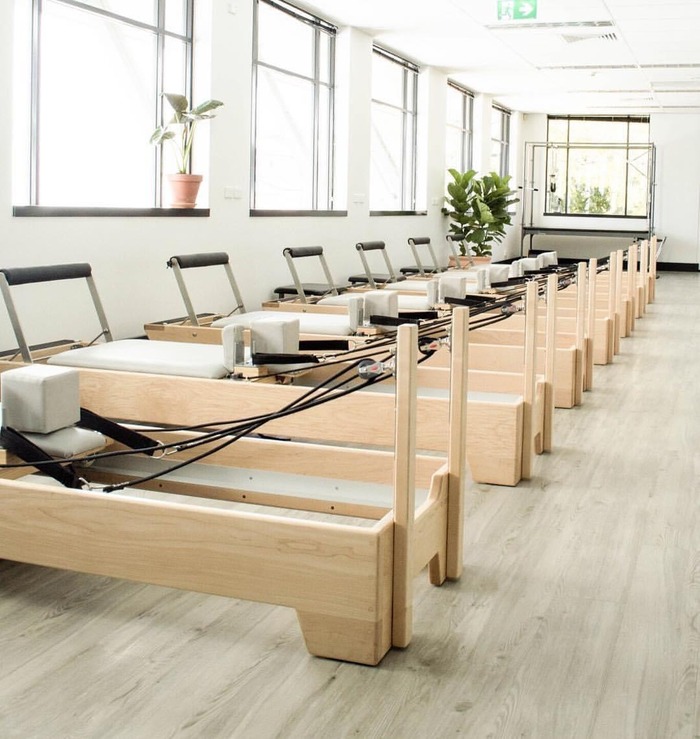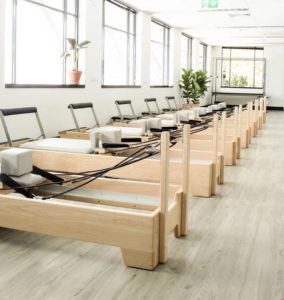
 Looking for a workout that includes fun, fitness and challenges mind and body? Pilates may be your answer.
Looking for a workout that includes fun, fitness and challenges mind and body? Pilates may be your answer.
Pilates doesn’t just include mind and body – it is defined by it! “Pilates is a mind-body exercise that focuses on strength, core stability, flexibility, muscle control, posture and breathing. Exercises can be mat-based or involve the use of specialised equipment.”
Joseph Pilates’ methodology was originally known as Controlology and it has only been more recently known as Pilates.
As the name suggests, Contrololgy is more than an exercise routine; it is a philosophy centred around mind and body synchrony for optimal outcomes. Pilates methodology focuses on movement awareness and quality, aims for effective activation and perception of target muscle groups and is completed with pace and fluidity. It is based on key elements inclusive of breath control, body placement for optimal postural alignment and power from a strong centre or core.
Challenging core muscle groups with a heightened awareness of alignment and breath control equals a mindful workout with mental and physical challenges resulting in widespread benefits inside and out.
 If this brings to mind a complex exercise routine only attempted by graceful ballet dancers or meditation masters, fear not – whilst both ballet dancers and meditation gurus can absolutely enjoy the challenge and benefit of Pilates it can be done anywhere by anyone! Studies even suggest that “individuals can improve their muscular endurance and flexibility using relatively low-intensity Pilates exercises that do not require equipment or a high degree of skill and are easy to master and use within a personal fitness routine.”
If this brings to mind a complex exercise routine only attempted by graceful ballet dancers or meditation masters, fear not – whilst both ballet dancers and meditation gurus can absolutely enjoy the challenge and benefit of Pilates it can be done anywhere by anyone! Studies even suggest that “individuals can improve their muscular endurance and flexibility using relatively low-intensity Pilates exercises that do not require equipment or a high degree of skill and are easy to master and use within a personal fitness routine.”
This methodology can be adapted to mat or chair exercises in the comfort of your own home. For a whole body workout and greater challenge, you may like to try equipment Pilates in a studio with machines including spring resistance to enhance your workout.
A studio setting with a variety of equipment can offer both increased support as required or increased resistance options. Pilates in a class setting can also bring the increased energy of groups if you benefit from working out with others. For those rehabilitating or managing injuries, Clinical Pilates led by a health professional can provide a safe environment and an individualised plan to optimise your health outcomes.
The New York Times was recently buzzing with some of the benefits of Pilates stating “Scientific research does support an array of impressive health benefits for Pilates. Studies suggest it may help to improve muscle endurance and flexibility, reduce chronic pain and lessen anxiety and depression.”
A few interesting points from science supporting Pilates across all ages:
– Once a week Pilates training in young, healthy and sedentary women resulted in significant improvements in skeletal muscle mass, flexibility, balance, core and strength, body awareness and negative affect. It also revealed that once-a-week training was enough to trigger detectable benefits
– 2 x 60 min sessions/ week in active middle-aged men and women for 12 weeks was enough to promote significant increases in abdominal endurance, hamstring flexibility and upper body muscular endurance
– Clinical trials found Pilates to be effective in rehabilitation, especially in improving pain and disability levels
– An analysis of the effects of Pilates on mental health outcomes found Pilates resulted in significant, large reductions in depressive and anxiety symptoms and feelings of fatigue as well as increases in feelings of energy
Pilates has been shown to improve mood states as well as improve physical fitness and prevent falls in the elderly
To find the right setting for you contact your local ….
And that is just a sample of the potential benefits of Pilates workouts – if you’re not enjoying them already why not give it a try and find out some of the many benefits yourself?

References
- Wells, C., Gregory S. K., Bialocerkowski, A. (2012). Defining Pilates exercise: a systematic review. Ther Med 20(4):253-62.
- Kloubec, J.A. (2010). Pilates for improvement of muscle endurance, flexibility, balance, and posture. J Strength Cond Res 24(3):661-7
- Tolnai, N., Szabo, Z, Köteles, F., Szabo, A. (2016). Physical and psychological benefits of once-a-week Pilates exercises in young sedentary women: A 10-week longitudinal study. Physiol Behav 1;163:211-218
- Byrnes, K, Wu, P., Whillier, S. (2018). Is Pilates an effective rehabilitation tool? A systematic review body. J bodyw Mov Ther 22(1):192-202.
- Fleming, K., M. Et al (2018). The effects of Pilates on mental health outcomes: A meta-analysis of controlled trials. Complement Ther Med.
- Bullo, V., Bergamin, M., Gobbo, S., Sieverdes, J. C., Zaccaria, M., Neunhaeuserer, D., Ermolao, A. (2015). The effects of Pilates exercise training on physical fitness and wellbeing in the elderly: A systematic review for future exercise prescription. Prev Med 75: 1-11
